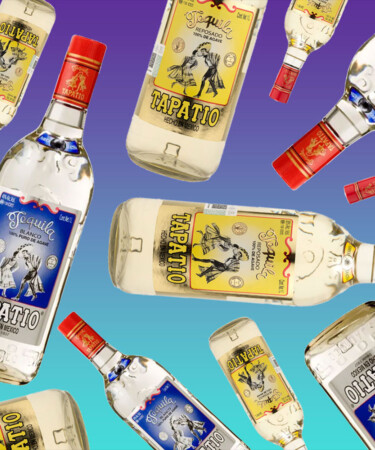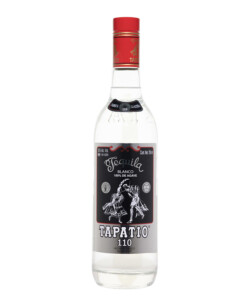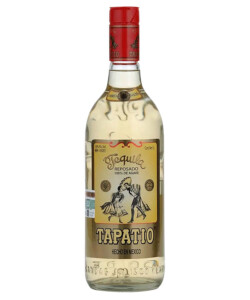Produced from Blue Weber agave grown in the highlands of Jalisco, Tequila Tapatio has established a cult-like following and has cemented itself as a bartender favorite. Founded by Don Filipe Camarena, Tapatio was first sold in 1940 and is still exclusively produced in small batches using traditional tequila production methods today, despite the modernization of the industry.
With five expressions, there’s a lot to learn about the beloved brand. Here are seven things you should know about Tequila Tapatio.
-
Tequila Tapatio has been distilled at La Alteña distillery for 83 years.
Since Tapatio’s launch, each batch of the brand’s tequila has been produced at Jalisco’s La Alteña, a now-famed distillery raised by Camarena. This wasn’t the founder’s first agave-related venture: While the Camarena family has been involved in tequila production since the early 1800s, they were forced to cease tequila distilling in 1910 when their family distillery burned down during the Mexican Revolution. Despite this, the Camarenas remained an integral part of the production process, and prior to establishing La Alteña, Don Filipe had made a career out of growing and selling agave for other tequila producers in the region. He constructed La Alteña on the very estate where his existing agave grew, began distilling tequila from plants harvested on the land, and called the spirit Tapatio. La Alteña is now home to Tequila Tapatio, Tequila Ocho, and El Tesoro, all of which are exclusively produced using agave sourced on the estate grounds. Today, Don Felipe’s grandson Carlos Camarena serves as La Alteña’s master distiller.
-
Tapatio is one of only a few tequilas made using the tahona method.
The tahona method is one of the most labor-intensive means of producing tequila and dates back nearly 500 years. In traditional tahona production, an enormous volcanic rock — sourced from the same land as the agaves — is chiseled into the shape of a wheel, attached to a large pole, and lowered into a pit filled with agave fibers and cooked agave hearts. The pole is then moved around the mouth of the pit, crushing the agave and squeezing the juice out of the plant that is then used for distillation. Though there are much more efficient means of juicing agave in modern tequila production — like the roller mill system or the diffuser system — tahona production lends itself to a slightly sweeter spirit, and some distillers committed to tradition continue to use the method today. Other tequila brands that use the tahona method include Tequila Fortaleza, G4, El Tesoro, and Patrón.
-
At La Alteña, there’s no agave left behind.
Tapatio makes sure to maximize the use of agave during production. Immediately after tahona pressing takes place, the remaining pressed agave is collected and passed through a sugar mill, which ensures that the maximum amount of juice has been extracted from the piñas and the agave fibers before distillation takes place. But it doesn’t end there. Before distilling the juice, distillers collect the leftover dry agave fibers and add them to large tea bags that are then lowered into the fermenter in order to express as much agave as possible.
-
Each of the tequilas in Tapatio’s lineup are double distilled in traditional copper alembics.
Tapatio has five tequila expressions under its umbrella: Blanco, Blanco 110, Reposado, Añejo, and Excelencia Gran Reserva Extra Añejo. Each of the spirits is distilled using small copper alambiques tequiliano pot stills, or copper alembic pot stills, which are widely regarded as the first apparatuses to ever be used to distill alcohol. Dating back to the medieval era, the alembic consists of three parts: the cucurbit, the anbik, and the receiver. First, the juice from the agaves is added to the cucurbit where it’s heated, causing vapor to rise into the anbik at the top of the cucurbit where it cools and sends condensed distillate down into the receiver. Each bottle of Tapatio undergoes this distillation process twice, which helps further emphasize its agave notes and creates a more easy-drinking spirit.
-
Tapatio wasn’t available in the United States until 2012.
Despite the fact that Tequila Tapatio was first introduced to Mexican markets in 1940, the spirit didn’t arrive north of the border until 2012, at which point Charbay became the spirit’s exclusive importer. Based in Ukiah, Calif., the Charbay Distillery was founded in 1983 by Miles and Susan Karakasevic as the 177th distillery in the United States. As a distillery, Charbay produces a number of spirits under its umbrella, including whiskey, vodka, brandy, and rum. But in 2012, it expanded its operations to include imported spirits, the first and only company to distribute Tequila Tapatio in U.S. markets.
-
Tapatio Blanco 110 is one of the booziest tequilas in the world.
While Tapatio Blanco 110 is distilled at La Alteña with the rest of the brand’s portfolio, this expression is the result of a collaboration between Carlos Camarena and father-and-son master distiller duo Miles and Marko Karakasevic. Distilled in limited production through copper alembic pot stills, Blanco 110 is bottled at 55 percent ABV, or 110 proof, and was created with the express intention of being used in cocktails. As 110 proof is the highest legal ABV for tequilas on the retail market, Tapatio Blanco 110 is one of the most alcoholic options available. According to the brand, the tequila is rested for five months in stainless steel vats and conveys aromas of citrus, mint, and white pepper with a palate that imparts notes of pepper, caramel, apple, and a hint of smoke.
-
The brand also distills one of the oldest tequila expressions.
Distilled in 2000, Tequila Tapatio Excelencia Gran Reserva Extra Añejo is one of the oldest tequilas in the world available for purchase. After undergoing Tapatio’s standard traditional production, the distillate is added to used Exelencia barrels made from white American oak where it’s left to age for five years. Once barrel maturation is complete, the spirit is divided into 5-liter glass jugs where it’s left to age for an additional 10 years. According to the brand, the extra añejo carries eucalyptus and caramel aromas while the palate delivers flavors like sandalwood, baking spice, herbs, and citrus.


